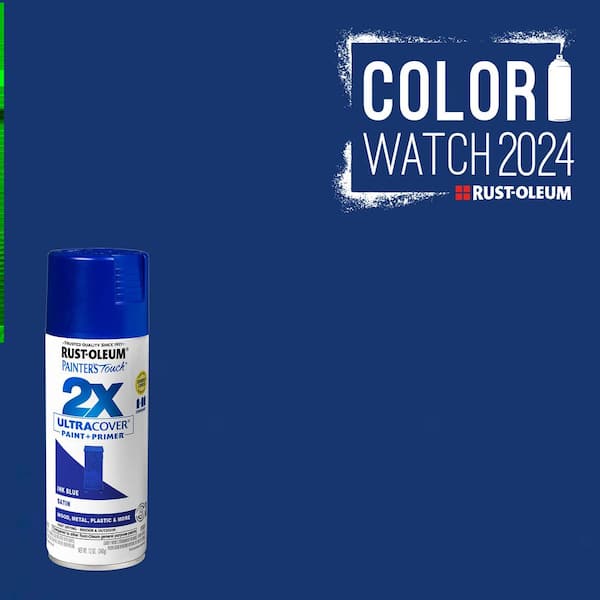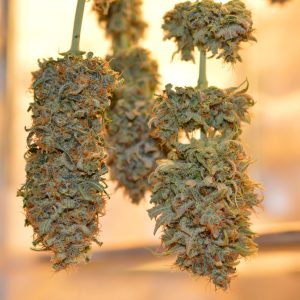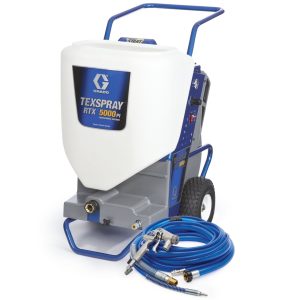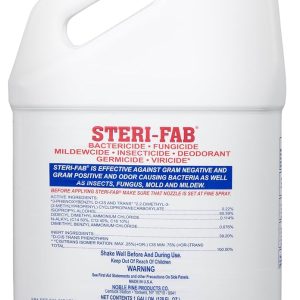
Blue colour spray paint stands as one of the most versatile and widely used aerosol finishes in both professional and DIY applications. From automotive touch-ups to artistic creations, blue spray paint offers an efficient solution for achieving smooth, even coverage across various surfaces. The popularity of blue hues stems from their psychological appeal and practical versatility, making them ideal for everything from industrial equipment to home décor projects. Understanding the nuances of different blue spray paint formulations can significantly impact your project’s success and longevity.
The aerosol paint industry has evolved tremendously over the past decades, with blue colour spray paint leading innovations in coverage, durability, and environmental friendliness. Modern formulations incorporate advanced pigment technologies that deliver superior color retention and fade resistance, particularly important for outdoor applications where UV exposure can compromise color integrity. Professional painters and hobbyists alike recognize that selecting the right blue colour spray paint involves considering factors beyond just the visual appeal of the color.
Understanding Different Types of Blue Colour Spray Paint
Acrylic Blue Spray Paint
Acrylic-based blue colour spray paint represents the most popular choice for general-purpose applications due to its excellent adhesion properties and quick-drying characteristics. These water-based formulations provide superior color clarity and maintain their vibrancy over extended periods. Acrylic blue spray paint typically dries to touch within 15-20 minutes and achieves full cure within 24 hours, making it ideal for projects requiring quick turnaround times.
The benefits of acrylic blue spray paint extend beyond convenience. These formulations produce minimal odor compared to solvent-based alternatives, making them suitable for indoor use with proper ventilation. The pigment dispersion in quality acrylic formulas ensures consistent color application without streaking or blotchiness, critical factors when achieving professional-grade finishes on visible surfaces.
Professional contractors often prefer acrylic blue colour spray paint for architectural applications because of its compatibility with various primer systems and its ability to accept topcoats without adhesion issues. The flexibility of cured acrylic films helps prevent cracking and peeling, particularly important for exterior applications subject to thermal cycling.
Enamel Blue Spray Paint
Enamel-based blue colour spray paint delivers superior durability and chemical resistance, making it the preferred choice for industrial and automotive applications. These solvent-based formulations create harder, more resilient surface films that withstand harsh environmental conditions and mechanical stress. Enamel blue spray paint typically requires longer cure times but compensates with exceptional longevity and resistance to fading, chalking, and weathering.
The molecular structure of enamel coatings allows for superior pigment integration, resulting in deeper, more saturated blue tones that maintain their intensity over years of exposure. Professional automotive refinishers frequently specify enamel blue colour spray paint for touch-up work because it can be color-matched precisely to original equipment manufacturer specifications.
Industrial maintenance teams rely on enamel blue spray paint formulations for equipment marking and safety applications where color coding must remain visible and legible for extended periods. The chemical resistance properties make these coatings suitable for environments with exposure to oils, solvents, and cleaning chemicals that would degrade lesser formulations.
Specialty Blue Spray Paint Formulations
Metallic Blue Spray Paint
Metallic blue colour spray paint incorporates aluminum or mica flakes to create distinctive shimmer effects that change appearance based on viewing angle and lighting conditions. These specialty formulations require careful application techniques to achieve uniform metallic distribution and avoid mottling or streaking. The particle orientation during application significantly affects the final appearance, making proper spray technique crucial for professional results.
Textured Blue Spray Paint
Textured blue spray paint formulations contain aggregate materials that create three-dimensional surface patterns while delivering color. These specialty coatings serve dual purposes of providing color and texture, often used for decorative applications or to hide surface imperfections. The texture profile can range from fine stipple patterns to coarse, heavily textured finishes depending on the aggregate size and concentration.
Applications and Surface Compatibility
Automotive Blue Colour Spray Paint Applications
Automotive applications represent one of the largest markets for blue colour spray paint, encompassing everything from complete vehicle refinishing to minor touch-up work. Modern automotive blue spray paints must meet stringent durability requirements including UV resistance, chemical resistance, and adhesion standards. Professional body shops rely on these formulations to achieve factory-quality finishes that maintain their appearance throughout the vehicle’s service life.
The automotive industry utilizes various blue shades for different purposes, from traditional navy blues for luxury vehicles to vibrant electric blues for sports cars. Each application requires specific performance characteristics, with exterior automotive blue colour spray paint formulated for maximum weather resistance while interior applications prioritize low odor and quick cure times.
Touch-up applications require precise color matching capabilities, often necessitating custom tinting of base blue formulations to achieve exact matches with existing paintwork. Professional automotive painters understand that successful color matching involves more than just visual comparison, requiring consideration of metamerism effects under different lighting conditions.
Industrial and Commercial Applications
Industrial facilities extensively use blue colour spray paint for safety marking, equipment identification, and corrosion protection. Safety regulations often specify particular blue shades for identifying specific equipment types or hazard levels, requiring precise color compliance. Industrial blue spray paints must withstand harsh environmental conditions including temperature extremes, chemical exposure, and mechanical abuse while maintaining color integrity and visibility.
Commercial applications include architectural elements, signage, and decorative finishes where blue colour spray paint provides cost-effective coverage for large surface areas. The ability to achieve uniform coverage over irregular surfaces makes spray application particularly valuable for commercial projects with tight timelines and budget constraints.
Maintenance operations frequently specify blue spray paint for equipment refurbishment and facility upkeep. The quick application and curing characteristics of quality formulations minimize downtime while providing durable, professional-appearing finishes that enhance facility aesthetics and equipment longevity.
Crafting and DIY Applications
Home improvement enthusiasts and crafters represent a growing market segment for blue colour spray paint, driven by social media inspiration and increased DIY project popularity. These applications often prioritize ease of use and versatility over extreme durability requirements, though quality and appearance remain important considerations.
Popular DIY applications include furniture refinishing, decorative accents, and seasonal decorations where blue spray paint provides quick transformation capabilities. The wide range of available blue shades allows creative expression while the convenience of aerosol application makes projects accessible to users with limited painting experience.
Craft applications benefit from the precision control possible with quality spray paint systems, enabling detailed work and gradient effects difficult to achieve with brush application. Many crafters prefer color match spray paint systems that allow custom color creation for specific project requirements.
Color Theory and Blue Paint Selection
Understanding Blue Color Psychology
Blue represents one of the most psychologically influential colors in the spectrum, associated with trust, stability, and professionalism. When selecting blue colour spray paint for commercial or residential applications, understanding these psychological impacts can inform decision-making and enhance project success. Different blue shades evoke varying emotional responses, from the calming effects of lighter blues to the authoritative presence of darker navy tones.
Market research consistently demonstrates blue’s popularity across demographic segments, making it a safe choice for applications requiring broad appeal. The versatility of blue allows it to serve as either a primary color statement or a complementary accent depending on the overall design scheme and surrounding color palette.
Color psychology principles suggest that blue environments can enhance productivity and reduce stress, explaining its popularity in commercial and educational settings. When specifying blue colour spray paint for these applications, considering the intended psychological impact can contribute to overall project success and user satisfaction.
Blue Shade Variations and Selection Criteria
The spectrum of available blue shades in spray paint formulations ranges from pale powder blues to deep midnight blues, each serving different aesthetic and functional purposes. Sky blue spray paint provides bright, cheerful tones ideal for children’s furniture and recreational equipment, while navy blue spray paint offers sophisticated elegance suitable for professional environments and upscale residential applications.
Royal blue spray paint delivers vibrant, attention-getting coverage perfect for signage and promotional displays where visibility and impact are priorities. The intensity of royal blue makes it effective for applications requiring color contrast and visual prominence while maintaining professional appearance standards.
Cobalt blue spray paint provides distinctive color characteristics that bridge the gap between traditional blue and blue-violet hues. This unique positioning makes cobalt blue effective for applications requiring differentiation from standard blue options while maintaining color harmony with existing blue elements.
Selection criteria for blue spray paint should consider lighting conditions in the intended application environment. Colors can appear significantly different under various lighting types, from natural daylight to fluorescent and LED artificial lighting. Professional color matching often requires evaluation under multiple lighting conditions to ensure acceptable appearance across all intended viewing situations.
Application Techniques and Best Practices
Surface Preparation for Blue Colour Spray Paint
Successful blue colour spray paint application begins with thorough surface preparation, often the most critical factor determining finish quality and longevity. Surface contamination, including oils, dirt, and previous coating residues, can compromise adhesion and create appearance defects that become more apparent with the uniform coverage characteristic of spray application.
Metal surfaces require particular attention to rust and corrosion removal, often necessitating mechanical or chemical preparation followed by appropriate primer application. The reflective nature of metal substrates can affect blue color appearance, making primer selection crucial for achieving intended color characteristics. Professional applicators understand that primer color can significantly influence the final appearance of blue topcoats, particularly with lighter blue shades.
Wood surfaces present unique challenges for blue spray paint application due to grain patterns and absorption characteristics. Proper sealing prevents uneven color absorption that can create blotchy appearances, while grain filling may be necessary for achieving smooth, uniform finishes on open-grain species.
Plastic substrates often require specialized primers or adhesion promoters to ensure adequate bonding with blue spray paint systems. The variety of plastic formulations and their different surface energies necessitate careful material identification and appropriate preparation procedures to prevent adhesion failures.
Professional Application Techniques
Professional application of blue colour spray paint requires understanding the relationship between spray pattern, application distance, and overlap patterns to achieve uniform coverage without runs or thin spots. Optimal spray distance typically ranges from 6-12 inches depending on the specific product formulation and environmental conditions, with closer distances risking runs and farther distances potentially causing dry spray and poor adhesion.
Multiple thin coats consistently produce superior results compared to attempting full coverage in single heavy applications. This approach allows better flow and leveling while reducing the risk of runs and sags that can compromise finish appearance. Professional painters typically apply 2-3 thin coats, allowing appropriate flash time between coats for solvent evaporation and film formation.
Environmental conditions significantly impact spray paint application success, with temperature and humidity affecting both application characteristics and cure properties. Ideal conditions typically fall within 65-75°F with relative humidity below 50%, though specific product formulations may have different optimal ranges. Wind conditions can affect spray pattern control and create contamination issues in outdoor applications.
Spray technique consistency requires maintaining steady movement speed and consistent overlap patterns throughout the application process. Professional applicators develop muscle memory for proper technique through practice and experience, enabling them to achieve uniform results across large surface areas without visible lap marks or coverage variations.
Quality Factors and Performance Characteristics
Durability and Weather Resistance
High-quality blue colour spray paint formulations incorporate UV-resistant pigments and resin systems designed to maintain color integrity under prolonged sun exposure. The stability of blue pigments varies significantly among different chemical types, with some organic blues prone to fading while inorganic alternatives offer superior lightfastness but may have different color characteristics.
Fade resistance testing provides quantitative measures of color stability under accelerated weathering conditions, helping specifiers select appropriate formulations for specific exposure requirements. Professional-grade blue spray paints typically undergo thousands of hours of accelerated testing to validate their durability claims and ensure consistent performance in real-world applications.
Chemical resistance properties become particularly important for industrial applications where blue spray paint may encounter cleaning solvents, fuels, or process chemicals. Formulation chemistry significantly affects chemical resistance, with cross-linked systems typically offering superior resistance compared to thermoplastic coatings.
Coverage and Hide Characteristics
The hiding power of blue colour spray paint depends on pigment loading, particle size distribution, and resin selection. High-quality formulations achieve full hide in fewer coats, reducing application time and material costs while ensuring uniform appearance. Opacity testing using standard hide charts provides objective measures of coverage performance for different blue formulations.
Film thickness affects both appearance and durability characteristics, with insufficient thickness compromising hide and protection while excessive thickness can create appearance defects and adhesion issues. Professional applicators use wet film thickness gauges during application to maintain optimal film builds throughout the project.
Spray pattern characteristics vary among different blue spray paint products, affecting application ease and finish uniformity. Consistent patterns with well-defined edges enable precise control and minimize overspray waste, while poor patterns can create streaking and coverage variations that compromise finish quality.
Troubleshooting Common Issues
Color Matching and Consistency Challenges
Color matching with blue colour spray paint requires understanding metamerism effects and the impact of substrate color on final appearance. Professional color matching often involves custom tinting of base formulations to achieve precise matches with existing surfaces, particularly important for repair and touch-up applications where color differences become readily apparent.
Batch-to-batch consistency can vary among different production runs of the same blue spray paint formulation, making it advisable to purchase sufficient material from single batches for complete projects. Date codes and batch numbers enable traceability and help identify potential consistency issues before they affect project outcomes.
Spray gun settings significantly affect color appearance through their impact on film thickness and surface texture. Consistent gun settings throughout the application process help maintain color uniformity, while changes in pressure or fluid delivery can create noticeable variations in blue color intensity and appearance.
Application Defects and Remediation
Orange peel texture represents one of the most common defects in blue spray paint applications, caused by improper spray technique, environmental conditions, or material viscosity issues. The uniform color of blue finishes makes texture defects particularly noticeable, requiring careful attention to application parameters and environmental control.
Runs and sags become especially apparent in blue finishes due to the color’s visual prominence and the way light reflects from uneven surfaces. Prevention through proper application technique proves more effective than attempting to repair these defects after occurrence, though careful sanding and recoating can address minor issues.
Fisheyes and crater defects result from surface contamination and can be particularly problematic with blue spray paints due to their visibility against the uniform color background. Thorough surface preparation and contamination control represent the primary prevention strategies, while affected areas typically require complete removal and reapplication.
Safety and Environmental Considerations
Health and Safety Protocols
Blue colour spray paint applications require appropriate personal protective equipment including respiratory protection, eye protection, and skin protection to prevent exposure to solvents and particulates. The specific hazards vary among different formulation types, with solvent-based products generally requiring more stringent protection measures than water-based alternatives.
Ventilation requirements depend on product volatility and application environment characteristics. Indoor applications typically require mechanical ventilation to maintain acceptable air quality and prevent accumulation of flammable vapors, while outdoor applications benefit from wind considerations and overspray control measures.
Fire safety precautions become particularly important with solvent-based blue spray paints due to their flammability characteristics. Proper storage, handling, and application procedures help minimize fire risks while ensuring compliance with safety regulations and insurance requirements.
Environmental Impact and Regulations
Volatile organic compound (VOC) emissions from blue colour spray paint contribute to air quality concerns and are subject to increasingly stringent regulations in many jurisdictions. Low-VOC and zero-VOC formulations provide environmentally responsible alternatives while maintaining performance characteristics suitable for most applications.
Waste disposal requirements vary by location and product type, with unused paint and contaminated materials typically classified as hazardous waste requiring special handling and disposal procedures. Proper planning and accurate quantity estimation help minimize waste generation while reducing disposal costs and environmental impact.
Sustainability considerations increasingly influence blue spray paint selection, with manufacturers developing formulations using renewable raw materials and more environmentally friendly production processes. Life cycle assessment data helps specifiers evaluate the total environmental impact of different product options throughout their service lives.
Product Selection and Purchasing Guide
Evaluating Blue Colour Spray Paint Options
Brand reputation and product history provide valuable indicators of likely performance and consistency for blue colour spray paint selections. Established manufacturers typically invest more heavily in quality control and technical support, resulting in more predictable outcomes and better problem resolution when issues arise.
Technical data sheets provide essential information for comparing different blue spray paint options, including coverage rates, cure times, durability characteristics, and application requirements. Professional specifiers rely on this technical information to make informed decisions and ensure compatibility with project requirements and existing systems.
Cost considerations extend beyond initial purchase price to include application labor, coverage efficiency, and service life factors. Higher-quality blue spray paints often provide better value through reduced application time, superior coverage, and longer service life despite higher initial costs.
Where to Purchase Blue Colour Spray Paint
Professional paint stores typically offer the widest selection of blue colour spray paint options along with technical expertise and custom color matching services. These specialized retailers understand professional requirements and can provide valuable guidance for complex applications and problem-solving support.
Home improvement retailers provide convenient access to consumer-grade blue spray paints suitable for many DIY applications, though selection may be limited and technical support minimal. These outlets often offer competitive pricing for standard formulations and colors but may lack specialized products for demanding applications.
Online suppliers can provide access to specialized blue spray paint formulations not available through local retailers, though shipping restrictions may apply to aerosol products. Price comparison opportunities and product reviews can aid selection decisions, but technical support may be limited compared to local suppliers.
For professional results and optimal performance, consider browsing our extensive selection of blue colour spray paint options designed to meet the most demanding application requirements.
Maintenance and Touch-Up Procedures
Long-Term Care of Blue Painted Surfaces
Regular cleaning helps maintain the appearance and longevity of blue colour spray paint finishes by removing contaminants that can cause degradation or discoloration over time. Appropriate cleaning methods depend on the specific paint formulation and surface type, with gentle approaches typically preferred to avoid damage to the paint film.
Inspection schedules enable early detection of coating degradation before major repairs become necessary. Professional maintenance programs typically include regular visual inspections supplemented by more detailed evaluations at scheduled intervals, allowing proactive maintenance that extends service life and maintains appearance standards.
Touch-up procedures require careful attention to color matching and surface preparation to achieve invisible repairs. Professional touch-up work often involves feathering edges and blending techniques that make repairs virtually undetectable, while poor touch-up work can be more visually objectionable than the original damage.
Repair and Renovation Considerations
Surface evaluation before renovation helps determine whether existing blue paint can be overcoated or requires complete removal. Factors including adhesion, compatibility, and appearance requirements influence this decision, with professional assessment often providing the most reliable guidance for complex situations.
Primer selection for repainting over existing blue surfaces depends on the original paint type, surface condition, and new coating requirements. Proper primer selection ensures adequate adhesion and prevents issues such as bleeding or discoloration that can compromise the new finish appearance.
System compatibility between existing and new coatings prevents adhesion failures and appearance problems that can develop over time. Professional painters understand the importance of compatibility testing and system selection to ensure long-term performance and appearance retention.
Frequently Asked Questions About Blue Colour Spray Paint
What is the best type of blue colour spray paint for outdoor use? Enamel-based blue colour spray paint typically performs best for outdoor applications due to its superior UV resistance and weather durability. Look for formulations specifically labeled for exterior use with fade-resistant pigments and high-quality resin systems that can withstand temperature fluctuations and moisture exposure.
How long does blue colour spray paint take to dry completely? Drying time for blue colour spray paint varies by formulation type. Acrylic-based products typically dry to touch in 15-20 minutes and cure fully within 24 hours, while enamel formulations may require 30-60 minutes to touch and 48-72 hours for complete cure. Environmental conditions significantly affect these timeframes.
Can I apply blue colour spray paint over existing paint without primer? While some high-quality blue colour spray paint formulations offer good adhesion to properly prepared existing surfaces, using an appropriate primer typically ensures better results and longevity. Primer is particularly important when changing from dark to light colors or when coating glossy surfaces.
What causes blue colour spray paint to fade, and how can I prevent it? UV exposure represents the primary cause of blue paint fading, particularly for organic pigment formulations. Choose blue colour spray paint with UV-resistant pigments and consider topcoat sealers for critical applications. Proper surface preparation and adequate film thickness also contribute to fade resistance.
How much area will one can of blue colour spray paint cover? Coverage varies significantly among different blue colour spray paint products and application techniques, typically ranging from 15-25 square feet per 12-ounce can. Actual coverage depends on surface texture, application thickness, and spray technique efficiency. Always purchase extra material to account for touch-ups and variations.
What safety equipment do I need when using blue colour spray paint? Essential safety equipment includes respiratory protection (appropriate mask or respirator), eye protection, and gloves. Work in well-ventilated areas and avoid ignition sources when using solvent-based formulations. Read and follow all label safety instructions for specific product requirements.
Ready to achieve professional results with your next project? Browse our premium selection of blue colour spray paint options and discover the perfect formulation for your specific application needs.





